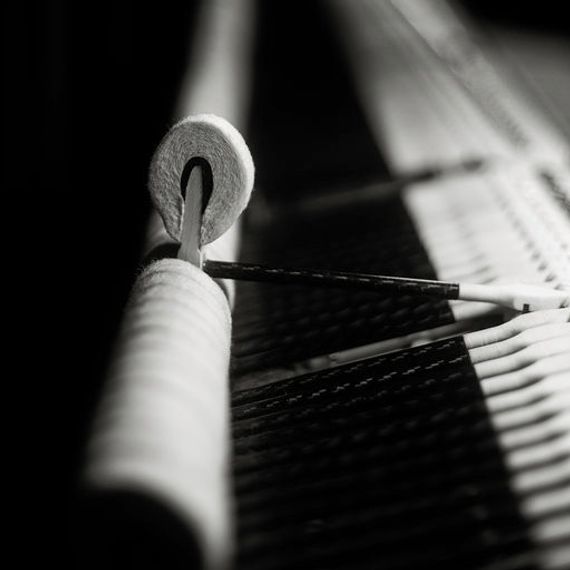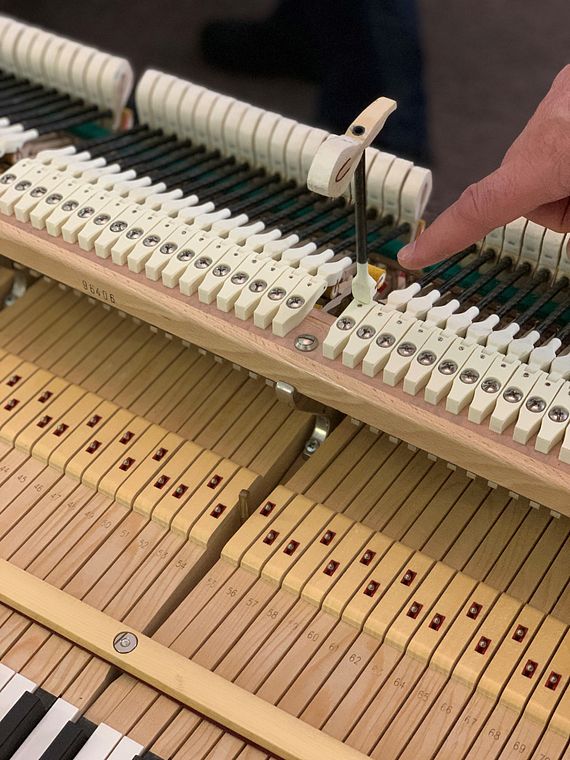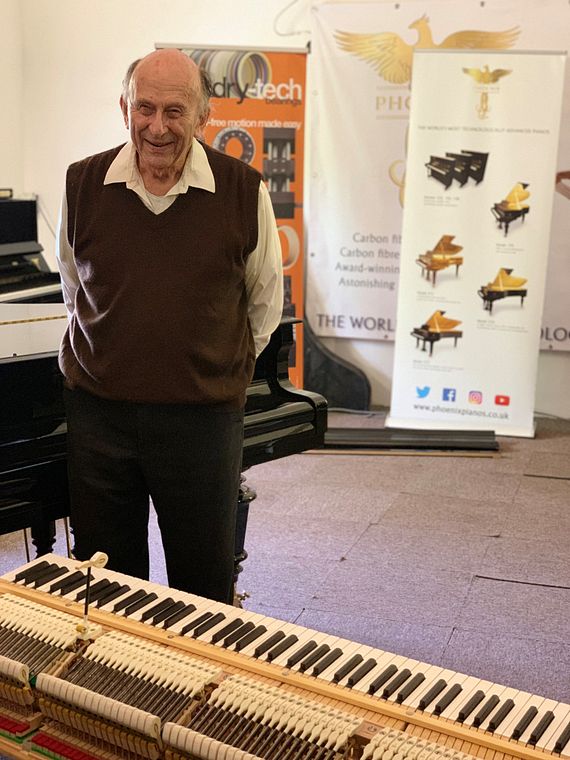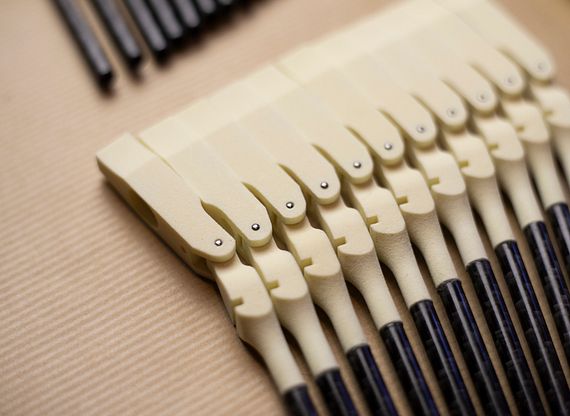Delicate parts 3D printed for perfect harmony
When pianos are built traditionally, most of their parts are made of wood. To counteract the susceptibility of wood to changing humidity or air temperature, Phoenix Pianos developed the D3D hammer system. The reworked version of the hammer mechanism, which is responsible for generating sound, is made almost exclusively of carbon fibre fabric and plastic. The tribologically optimised iglidur® I3 high-performance polymer was used for the moving and the fixed parts of the hammer flange. The laser sintered hammers allow precise replication of the original parts, improve sound properties, extend service life, and reduce maintenance cost and effort.
- What was needed: Components for a piano hammer flange
- Manufacturing method: Selective laser sintering with laser sintering powder
- Requirements: Low-friction, wear-resistant parts that fit precisely
- Material: iglidur I3
Contact an expert
Problem
Wood is the construction material that has been central to traditional piano-building for centuries. The hammer mechanism used to strike the piano strings requires especially great precision and therefore a great deal of maintenance. Wood's susceptibility at high temperature and humidity is one of the many reasons why the head of Phoenix Pianos, a British company, was looking for a more resistant alternative. But any alternative materials must fulfil the existing requirements of delicate parts that fit into the mechanism precisely and operate with little friction. The parts are also subjected to a great many key depressions, which causes wear.Solution
For the hammer flange, which consists of a moving part and a part that is fixed to the piano, igus® created a prototype using additive procedures. Instead of wood, iglidur® I3 was used for the parts. It is a wear-resistant laser sintering polymer with optimised sliding properties and meets the piano-building temperature and humidity requirements. At the same time, 3D printing allows quick production of identical parts. Regular re-adjustment to avoid off-key notes can be reduced to a minimum. iglidur® I3's colour, which resembles that of ivory, rounds off the functional parts and prevents the fact that plastic has been used in classic piano-building from being obvious.Traditional piano-building, modern components
The mechanism the pianist uses to create sound on the piano is, in principle, a simple one. The interior of the piano has one string per key. Each press of a piano key triggers a mechanism that causes a hammer attached to a shank to strike the associated string. In traditional piano-building, the material used for the fixed parts of this hammer mechanism is hornbeam. But wood is sensitive to changes in temperature and humidity, and this affects the piano's sound. The piano must therefore be regularly tuned and maintained. For Richard Dain, who heads Phoenix Pianos, that was a good reason to rework the hammer mechanism. As an engineer and amateur pianist, he set himself the goal of replacing the sensitive wooden parts with more resistant materials without sacrificing sound quality. He replaced the hammer mechanism's shank with a complex carbon fibre fabric that is very strong while remaining lightweight. The uniformity and low weight allow first-class, climate-resistant performance. For the remaining parts of the hammer flange, which consists of a fixed and a moving element, Dain worked with the igus® GmbH 3D printing team.

Large material selection at igus®
The collaboration of Richard Dain with the igus® GmbH 3D printing team resulted in the D3D hammer system, in which each wooden part is replaced with a polymer one. Laser sintering allowed quick creation and testing of a prototype for the hammer flange. The advantage of the procedure is the level of detail in the shape of the printed components. Dain quickly settled on iglidur® I3, a polymer developed specifically for laser sintering. The new iglidur® hammer mechanism components are especially wear-resistant and promise durable, consistent mechanical performance. The flange components are connected to a metal pin that, in conjunction with the iglidur polymers, exhibits an especially low coefficient of friction.
The system also proved its effectiveness in a practical test: pianists compare the change to switching from a Model T Ford to a Ferrari. After initial familiarisation, they are able to perform better with less effort and establish a completely new relationship with the instrument.

iglidur® I3 – innovative 3D printed polymer for proven mechanics
The iglidur® I3 laser sintering material ensured that the requirements of the new hammer flange were met, if not exceeded. The polymer's high wear resistance is designed precisely for sliding applications, and the material's stability keeps the components firm. The parts also fit perfectly and have up to 50 times the wear resistance of other plastics, ensuring consistent mechanical movement even after thousands of strikes.
iglidur® I3 exhibits great strength and resistance to changes in humidity and temperature, and Dain says that it might last longer than the piano in which it is installed. Since iglidur® polymers are enriched with solid lubricants, components made from them operate dry and require no lubrication or maintenance. The material's colour, which resembles ivory, also supports the overall aesthetics of the hammer mechanism.
Manufacture of customised parts from iglidur® I3 takes only one to three days and is economical even for a single unit, since there are no tool or rework costs. Ordering is quick and simple with the online 3D printing service: the 3D model of the part needed can be uploaded via the browser window as a STEP file. The model, price and price graduation for each material and the manufacturing time are displayed immediately. The manufacturability of the component in the selected process is checked immediately and potential problem areas are marked. Printed parts can be smoothed, coloured or machined as necessary.
More about the igus 3D printing service

Other application examples for 3D printed components can be found here:
All customer applications at a glance
